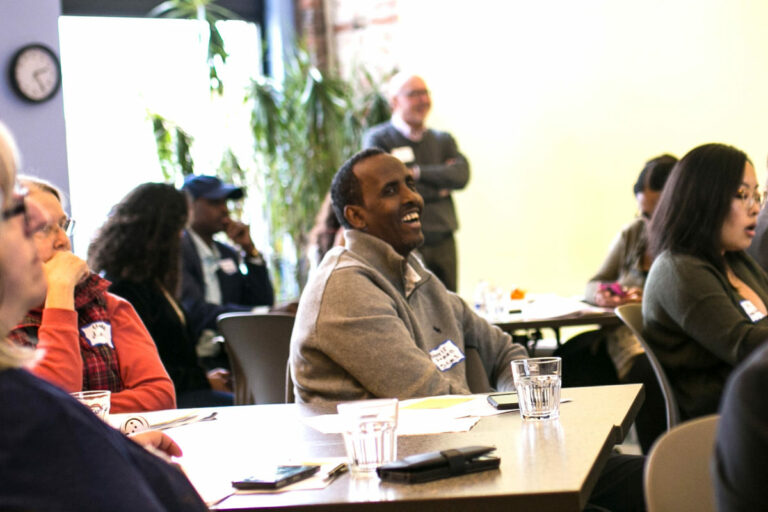What Can Investing in Nonprofit Infrastructure Do?

In 2017, we partnered with the Coalition of Asian American Leaders to launch a pilot round of the Nonprofit Infrastructure Grant Program, made possible with funding from the State of Minnesota. Kate Barr, president and CEO of Propel Nonprofits, talked about what led to the creation of this grant program in this blog. As the final reports from this pilot round of the grant program come in and we gear up for the next round (stay in the loop on the RFP announcement!), I’ve been reflecting on what we’ve learned. What happens to the missions of small, culturally specific led and serving nonprofits when these organizations are able to invest in what we call “Core Mission Support”? Here were some top lessons learned, or more accurately, reinforced:
Nonprofits Know What They Need to Thrive
“What I like about the Nonprofit Infrastructure Grant approach is we told you all what we needed and you funded it, versus you telling us what we needed. What this approach and grant has done is empower marginalized communities and people who run organizations on their behalf. We’re on the front lines and know what our communities need.” – ANEW BAM
One of the best things about this grant program is it started from a place of trust: trust that these organizations and leaders were working to address a critical need not being filled by other institutions. This included culturally specific youth programming in the case of ANEW BAM and maternal/child health services in Native nations located in Northern Minnesota for Mewinzha Ondaadiziike Wiigaming. The RFP asked nonprofit leaders to identify what infrastructure investments they needed to do their work better. That included investments in technology (e.g., donor databases, new iPads and computers, upgraded software), new financial systems, and space and time to expand partnerships. Propel’s role was to help them identify blind spots and offer technical assistance that contributed to the success of the organization’s infrastructure project.
Investments in Internal Efficiencies and Systems Help Leverage Funds for Programs
“We feel now we are more able to ask for gifts and grants and tell funders that we are accountable, that we know where the money is, where our budget is and how we are doing.” – Hnub Tshiab: Hmong Women Achieving Together
For most of the NIGP grantees, this was their first reimbursement grant as opposed to an upfront grant of dollars. Reimbursable grants require systems that can track and report on expenses and outcomes on an ongoing basis, as well as the ability to build new relationships with grant managers and programming partners. Through one-on-one coaching and group informational sessions, grantees were able to build their capacity to apply for government contracts on their own. Of the grantees who have submitted their final report, 100% said they’ve gained confidence in administering a publicly-funded grant and 100% have increased their understanding of a reimbursement grant.
Solid Infrastructure Helps Nonprofits Ride the Waves of Change
“It was especially crucial to have this grant during a key transitional period. It provided capacity to work with an external consultant that helped expand our reach and allowed more time to be spent on new sources of funding.” – LatinoLEAD
As Kate Barr noted in another previous blog, when transitions and changes come – which they inevitably will – they “become slower and more complicated when all the gears haven’t been properly greased.” Change can be especially hard on smaller organizations with less cushion – financial or staff capacity – to begin with. Working technology, efficient systems, and an engaged staff and board should be the foundation of any organization, not sidelined for “sometime down the road.” Solid infrastructure and an appropriately sized team allow leaders breathing room to focus on important future steps versus solely on current disruptions.
Investments in Staff and Board Don’t Get Enough Attention
“This was the first time in our 7-year history as an organization that we were able to invest in our leadership.” – Public Functionary
This is not an uncommon sentiment. Too often, “staff development” can seem like an easy line-item to cross out when an old computer breaks down. However, grantees reported that by investing in staff and board development, management-level staff had more time for leadership-level thinking – again, the space to breathe and think strategically. This is essential to be able to respond to urgent community needs and to sustainably grow an organization.
2019 Nonprofit Infrastructure Grant Program
Based on these encouraging (but not surprising) outcomes, we’re excited to launch a second round of the Nonprofit Infrastructure Grant Program. Get more details and sign-up for program updates on our website: https://www.propelnonprofits.org/capacity-building/nigp/
Related Resources
True Program Costs: Program Budget and Allocation Template and Resource
It’s time for nonprofits to switch the narrative away from overhead costs vs. programming costs to an understanding of true…
Core Mission Support: A New Graphic
Nonprofits need a better way of representing true program costs. We recommend using this helpful graphic instead of the unhelpful…

